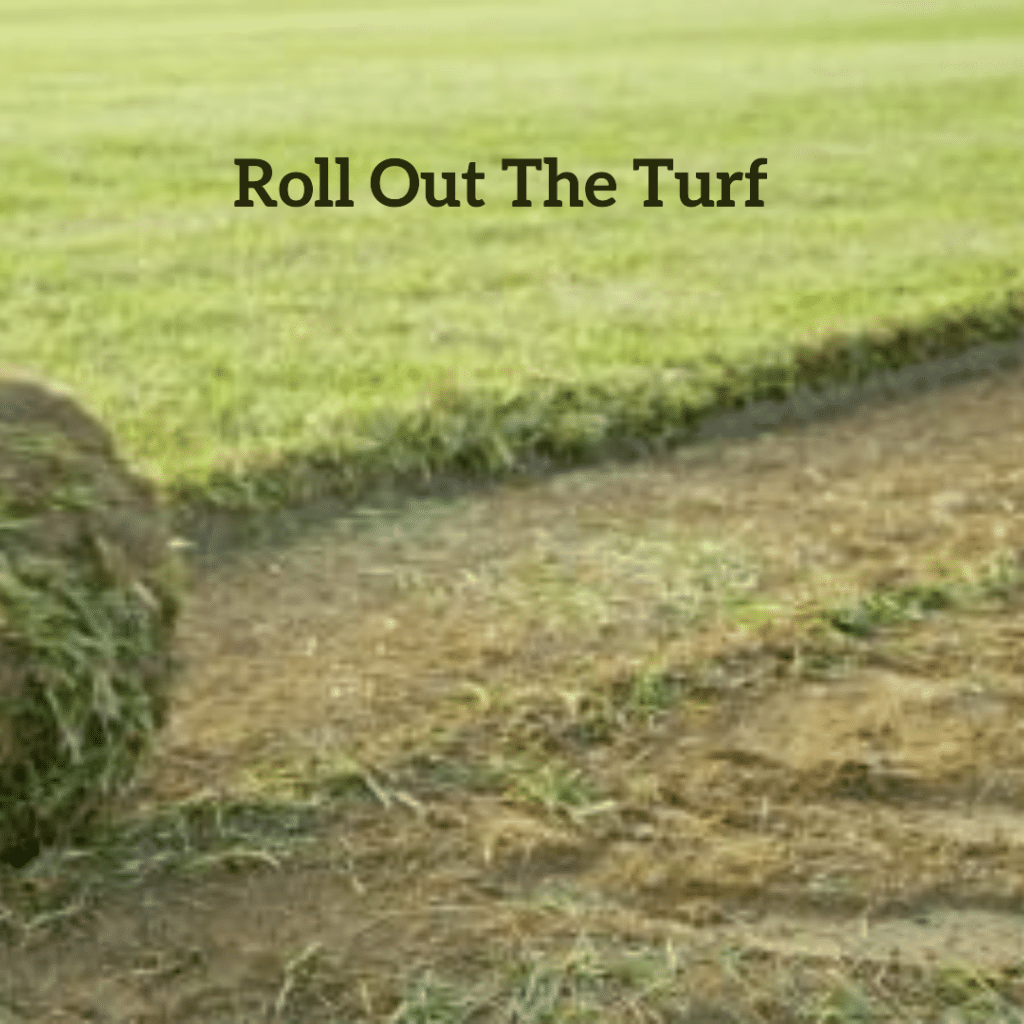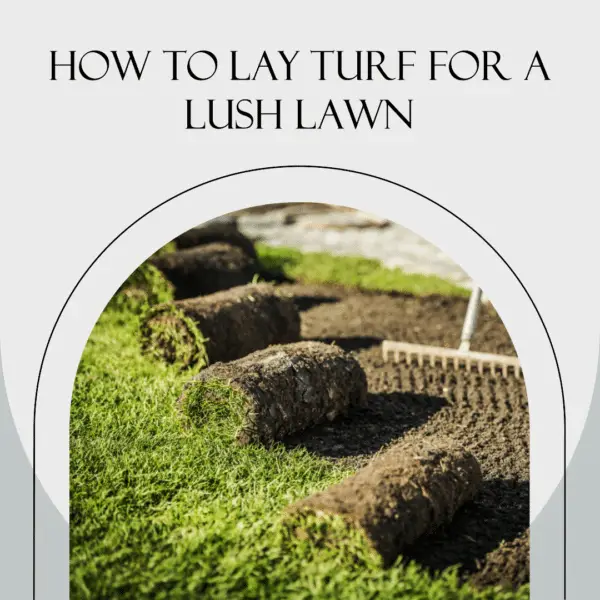Mastering how to lay turf correctly stands as the cornerstone of cultivating a thriving and verdant lawn.
Imagine the satisfaction of walking on a velvety carpet of vibrant, emerald-green grass – a true testament to the wonders of nature and your unwavering commitment to a well-groomed landscape.
However, turning this dream into a reality requires more than mere wishes; it demands meticulous planning, thorough groundwork, and precise execution.
Whether you’re breathing new life into your existing yard or embarking on a lawn creation from scratch.
How to Lay Turf
In this comprehensive guide, we will not only dive into the step-by-step process of effectively laying turf but also illuminate pivotal aspects encompassing ground preparation, soil leveling, strategic timing for installation, and nurturing your lawn post-installation.
Furthermore, we’ll tackle common inquiries such as the ideal moment to trim new turf, the feasibility of turf installation during winter, gauging the financial considerations, and comprehending the timeline for your newly laid lawn to establish its roots.
Prepare to embark on an enlightening journey, as we equip you with the knowledge and insights needed to metamorphose your outdoor space into a haven of picturesque beauty and flourishing greenery.
Preparing the Ground for Turf
Before you embark on the journey of transforming your outdoor space into a lush green oasis, it’s crucial to lay the groundwork – quite literally. Proper preparation of the ground sets the stage for successful turf installation and healthy growth. Here are the key steps to get your turf project off to a strong start:
Clearing the Area: The first step is to ensure that your designated area is free from obstacles that could hinder the growth of your new turf. Remove debris, rocks, and any remnants of old vegetation to create a clean canvas.
Soil Testing: Understanding your soil’s characteristics is essential for the long-term health of your lawn. Conduct a soil test to assess pH levels and nutrient content. This information will guide you in determining any necessary soil amendments.
Soil Cultivation: Compacted soil can impede root growth and water penetration. Use a tiller or manually dig the soil to loosen it up, creating an environment that encourages healthy root development.
Adding Soil Amendments: Enhance your soil’s quality by incorporating compost and organic matter. These additions improve drainage, boost fertility, and create a balanced ecosystem that supports the growth of your new turf.
Leveling the Soil Ready For Your Turf
A smooth and even surface is the foundation of a visually appealing and thriving lawn. Properly leveling the soil provides several benefits, including preventing uneven growth and water pooling. Follow these steps to achieve a well-prepared base:
Importance of a Smooth Surface: An even terrain not only contributes to the aesthetic appeal of your lawn but also ensures uniformity in grass growth. Uneven surfaces can lead to variations in irrigation and mowing challenges.
Soil Grading: Employ rakes and leveling tools to create a uniform grade across the designated area. This step helps distribute water evenly and minimizes the risk of water accumulation.
Soil Compaction: Once the soil is leveled, compact it using a roller or compactor. Proper compaction ensures a stable base for your turf, reducing the risk of sinking and uneven settling over time.
By diligently following these preliminary steps, you’re setting the stage for a successful turf installation that will result in a vibrant, healthy lawn. With a well-prepared foundation, your turf will have the best possible start for rooting, growth, and overall longevity.
Purchasing Turf
Choosing the right type of turf is a pivotal decision that shapes the aesthetics and functionality of your lawn. Here’s what you need to consider when purchasing turf:
Types of Turf: Familiarize yourself with various grass varieties, each possessing distinct characteristics such as shade tolerance, drought resistance, and maintenance requirements.
Calculating Turf Quantity: Accurately measure the area you intend to cover with turf, accounting for potential wastage due to cutting and fitting. This step helps you order the right amount of turf and avoid unnecessary expenses.
Sourcing Turf: Explore options from local nurseries, garden centers, or reputable online suppliers. Ensure the quality and freshness of the turf by buying from trusted sources.
Turf Cost Factors: Turf prices can vary based on factors like the type of grass, supplier pricing, and any additional fees such as delivery. Consider your budget while balancing the quality and suitability of the turf for your area.
Installing the Turf

With the groundwork laid and the turf procured, it’s time to embark on the exciting phase of installation. Follow these steps for a successful turf installation:
Pre-installation Watering: Moistening the soil creates a hospitable environment for the turf to adhere to. Adequate moisture aids in seamless integration.
Turf Layout: Lay the turf pieces in a staggered pattern to promote natural growth and ensure a cohesive appearance. Overlapping seams slightly will prevent gaps as the turf settles.
Trimming and Fitting: Customization is key. Trim the turf to accurately fit curves, edges, and irregular spaces, allowing for a neat and professional finish.
Rolling the Turf: Employ a lawn roller to establish solid contact between the soil and turf. This ensures better water absorption and prevents air pockets.
Post-Installation Care
Your newly installed turf requires diligent care to establish strong roots and maintain its health and beauty:
Watering Regimen: Begin with regular and thorough watering to promote root growth. Gradually reduce the frequency as the turf establishes itself.
Mowing Guidelines: Refrain from mowing until the turf is firmly rooted. When you do start mowing, follow proper height recommendations for your turf type.
Fertilization Schedule: Feed your turf with appropriate nutrients at the right intervals to bolster its health and vitality.
Pest and Weed Management: Keep a watchful eye for common lawn pests and weeds, taking prompt action to prevent them from establishing a foothold.
Renovating an Existing Lawn
If you’re giving new life to an existing lawn, consider these steps for a successful transition:
Removing Old Grass: Use sod cutters or manually remove old grass to create a clean slate.
Soil Assessment: Evaluate soil quality and make necessary amendments to optimize conditions for the new turf.
Replacing with New Turf: Apply the installation steps mentioned earlier to ensure the successful integration of new turf into the renovated space.
FAQ’s
Can I cut new turf after 2 weeks?
Yes, you can typically mow new turf after about 2 to 3 weeks of installation. However, it’s important to ensure that the turf has firmly rooted before mowing. To check, gently tug on the grass – if it resists being lifted, it’s likely ready for its first trim. Set your mower to a high setting for the initial mow to avoid stressing the newly established roots.
Can you lay turf in winter?
While it’s possible to lay turf in winter, it’s generally not the ideal time. Turf establishment requires warm soil temperatures to encourage root growth. Cold temperatures during winter can slow down root development and increase the risk of the turf not taking root properly. If you must lay turf in winter, ensure the soil is workable and consider using warm-season grass varieties that are better adapted to cooler conditions.
How much does turf cost?
The cost of turf can vary widely based on factors such as the type of grass, the supplier’s pricing, the size of the area you’re covering, and any additional fees for delivery or installation. On average, turf costs £4.50 per square metre. It’s recommended to obtain quotes from different suppliers and consider the long-term benefits of investing in quality turf that suits your needs.
How long does it take for turf to establish?
Turf establishment time varies depending on factors like the type of grass, local climate, and care provided. Generally, it takes around 2 to 6 weeks for turf to establish itself and develop strong roots. During this period, it’s essential to water regularly, avoid heavy foot traffic, and refrain from mowing until the turf is well-rooted. Keep in mind that complete maturity might take a few months, but you can typically start using your lawn for light activities once the turf has established.
Conclusion
By following the comprehensive guide outlined above, you can confidently embark on the journey of laying and nurturing turf to create a vibrant, thriving lawn. Remember that successful turf installation requires a combination of proper planning, meticulous execution, and ongoing care. Through careful preparation and dedicated maintenance, your lawn will become a testament to your commitment to a lush and inviting outdoor space.
Author Profile

- I have many qualifications and certificates in construction, such as City & Guilds, CPCS and CITB. These are the highest standards of training and competence in the industry. Whether you need help with plumbing, carpentry, bricklaying or any other trade, I’m here to help you succeed.
Latest entries
- March 6, 2024CalculatorsWall Tile Calculator: How Many Wall Tiles Do You Need
- February 29, 2024Roof Truss Cost Calculator
- December 31, 2023Wage Take Home Calculator
- December 30, 2023Day Rate Calculator

